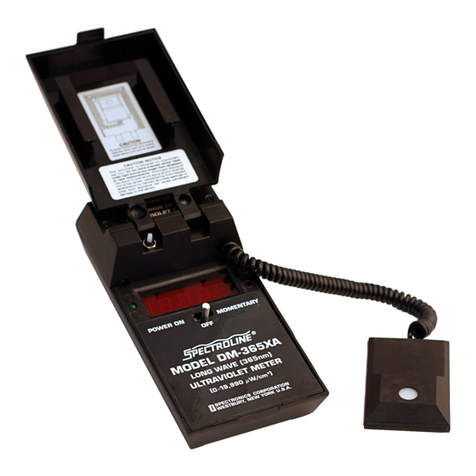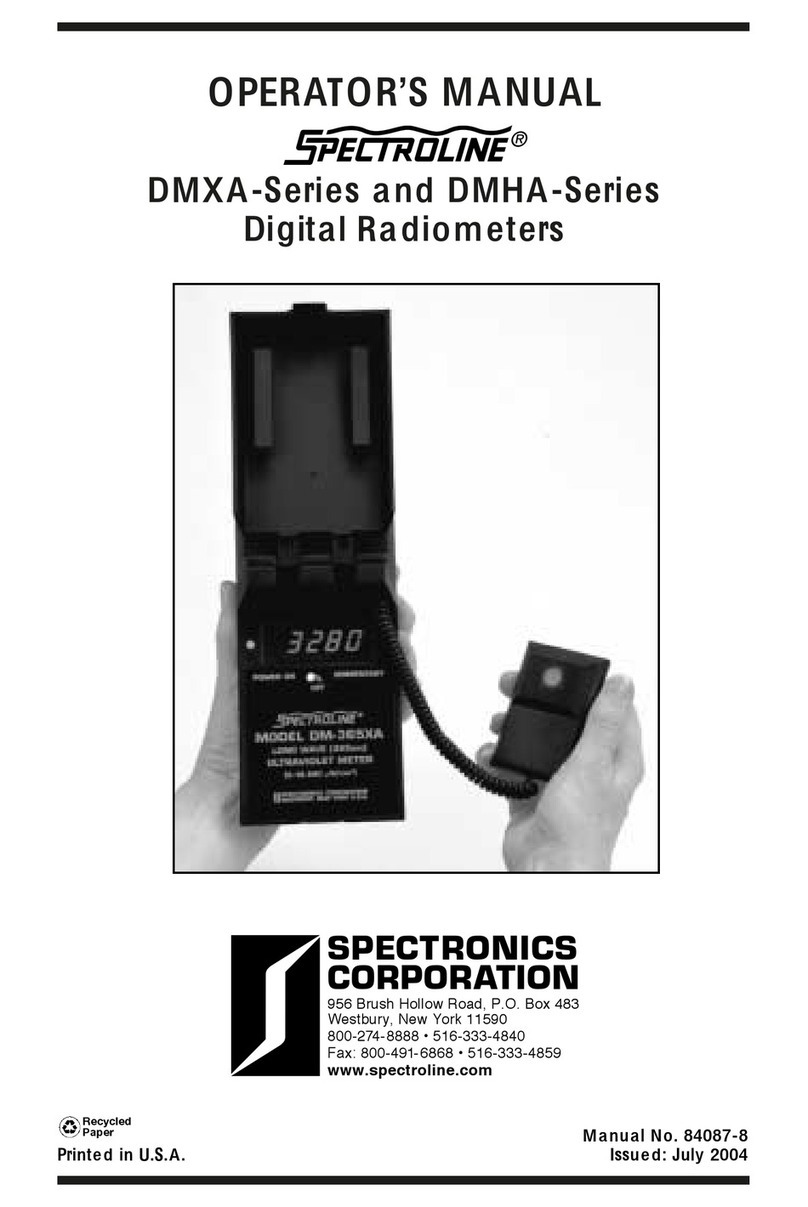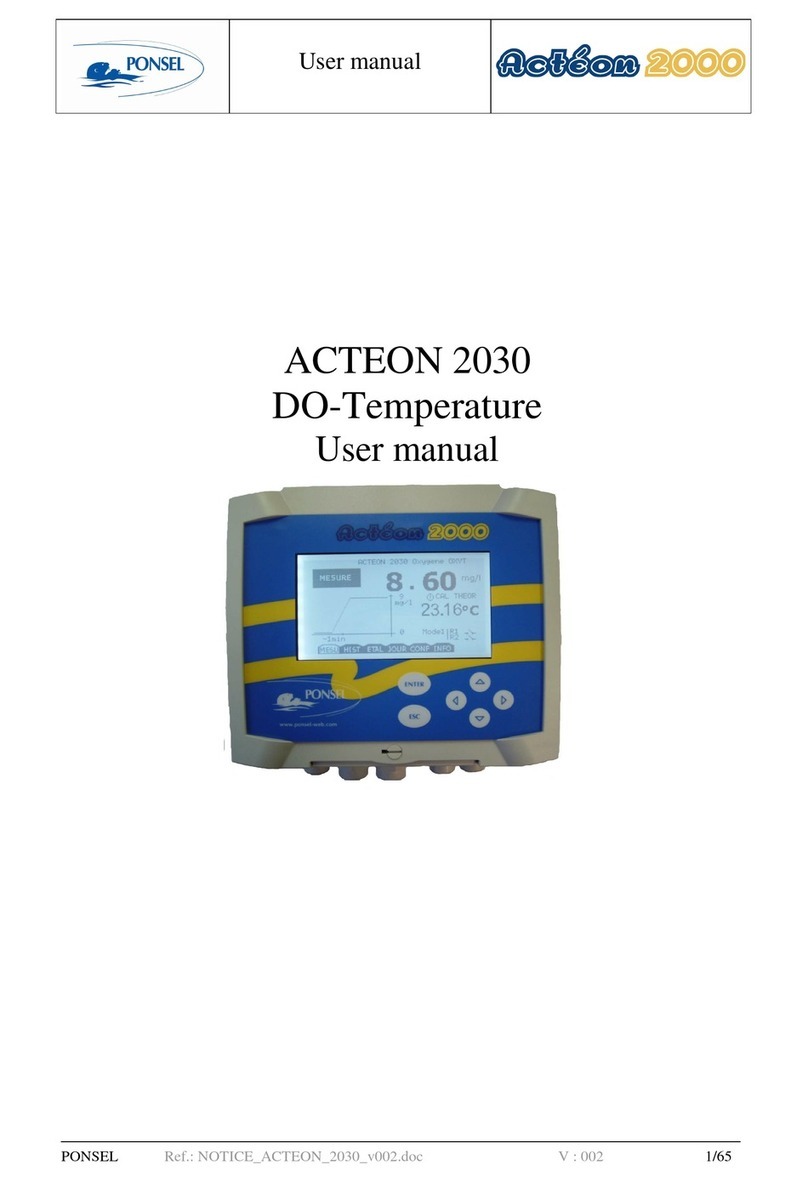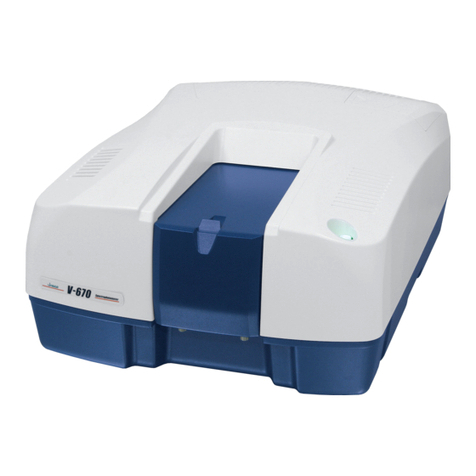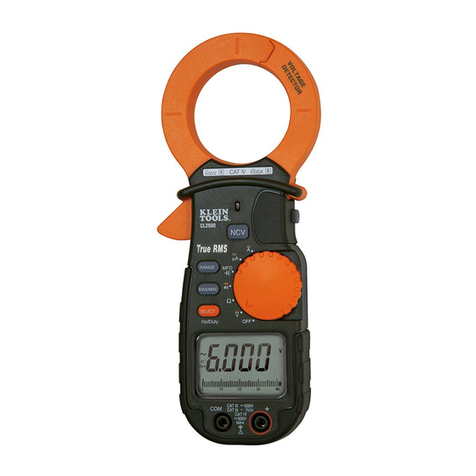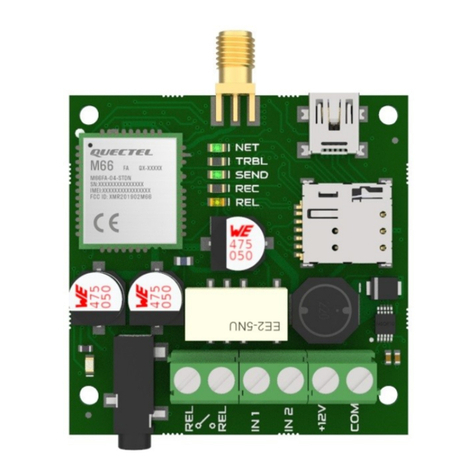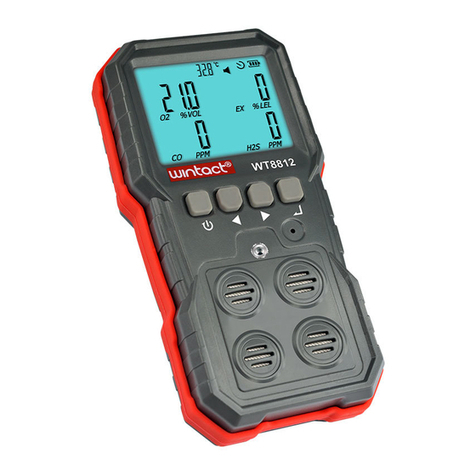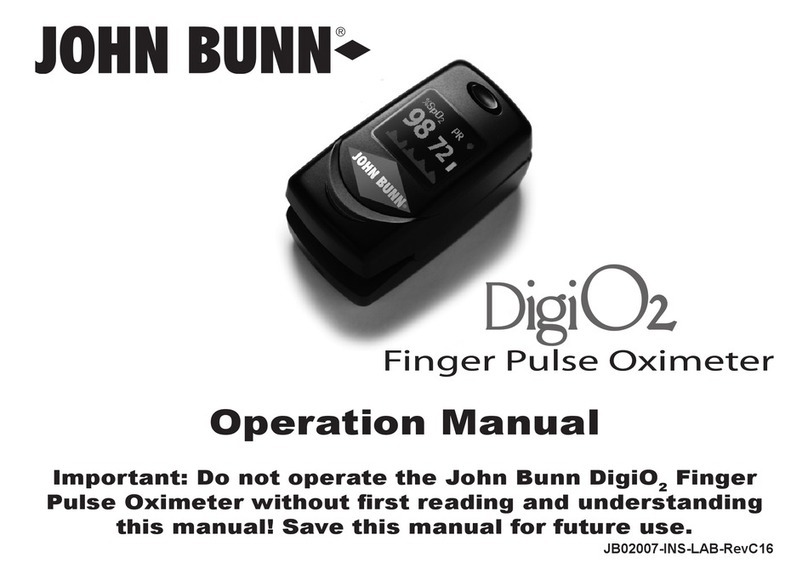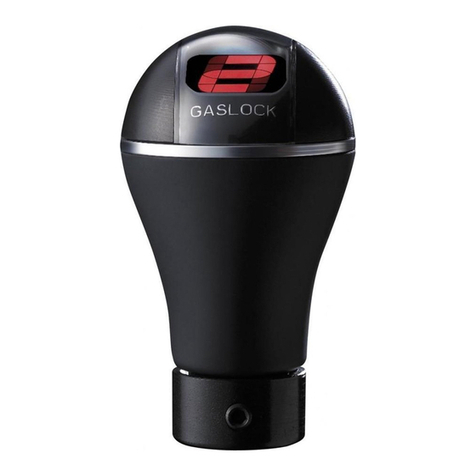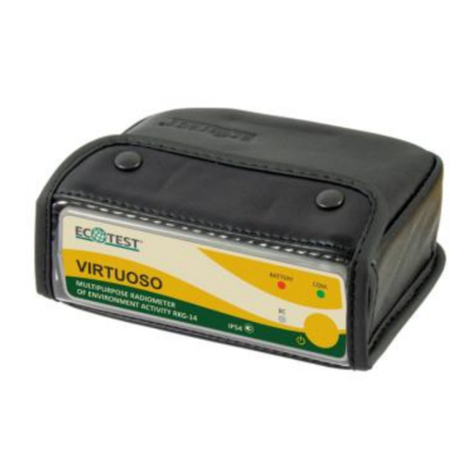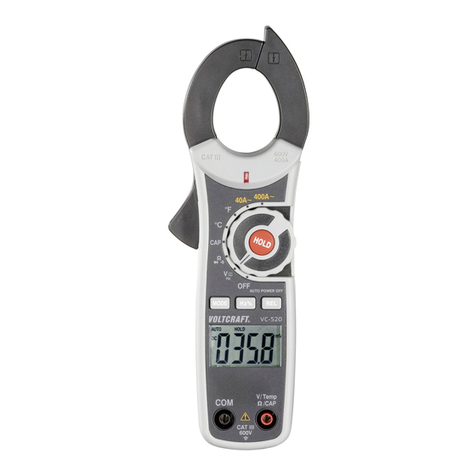Spectronics Spectroline AccuMax Series User manual

OPERATOR'S MANUAL
AccuMAX™Meter Series
XRP-3000
Radiometer/Photometer Kit
AM07005-6
PRINTED IN U.S.A. September 2012

CONTENTS
1. INTRODUCTION
1.1 GENERAL........................................................................................................................................….3
1.2 FEATURES.....................................................................................................................................….3
1.3 PRECAUTIONS...................................................................................................................................3
2. GENERAL SPECIFICATIONS
2.1 UNPACKING AND INSPECTION....................................................................................................….4
2.2 TECHNICAL DATA .........................................................................................................................….5
2.3 ELECTRICAL SPECIFICATIONS....................................................................................................….5
2.4 OPTICAL ACCURACY AND CALIBRATION........................................................................................5
2.5 ENVIRONMENTAL SPECIFICATIONS.................................................................................................5
3. INSTALLATION
3.1 CONTROLS, CONNECTORS AND INDICATORS..........................................................................….6
3.2 DIRECT CONNECTION...................................................................................................................….6
3.3 ATTACHING WATER-RESISTANT ADAPTER (REMOTE CONNECTION).........................................6
4. CONTROLS
4.1 BUTTONS........................................................................................................................................….7
4.2 DISPLAY AND ICONS.....................................................................................................................….7
5. OPERATION––QUICK GUIDE..........................................................................................................8
6. USING THE AccuMAX
6.1 ON/OFF............................................................................................................................................….9
6.2 DETECTOR ATTACHED.................................................................................................................….9
6.3 CHOOSING AN OPERATING LANGUAGE ......................................................................................8-9
7. CUSTOMIZING SETTINGS
7.1.CHANGING UNITS OF VISIBLE LIGHT MEASUREMENT .............................................................10
7.2 ADJUSTING CONTRAST................................................................................................................…10
7.3 ADJUSTING BACKLIGHT...............................................................................................................….10
7.4 ADJUSTING INTERVAL .................................................................................................................…11
8. AccuMAX OPERATION MODES
8.1 ABSOLUTE DATA / NORMAL MODE..................................................................................................12
8.2 HOLD AND PEAK FUNCTIONS.....................................................................................................….12
8.3 ZERO ............................................................................................................................................….12
8.4 INTEGRATION (INTG) MODE............................................................................................................13
9. SPECTRAL RESPONSE (THEORY OF OPERATION)…………………………..….................14
10. WARRANTY, MAINTENANCE AND BATTERY REPLACEMENT
10.1 WARRANTY......................................................................................................................................15
10.2 PREVENTIVE MAINTENANCE .......................................................................................................15
10.3 BATTERY REPLACEMENT .............................................................................................................15
10.4 HIGH VISIBLE LIGHT READINGS ..................................................................................................15
© 2012 Spectronics Corporation. All rights reserved.
2

1. INTRODUCTION
1.1 GENERAL
The AccuMAX™ XRP-3000 advanced digital
radiometer/ photometer features a microprocessor-
controlled readout unit with a dual-sensor detector to
accurately measure both ultraviolet and visible light. It
is specially engineered for nondestructive testing
(NDT) applications. The UV-A/VIS sensor connects
directly to the readout unit or via a USB cable with a
water-resistant sensor adapter. A visible luminance
sensor is available as an optional accessory.
The XRP-3000 provides black light (long wave UV)
readings from 0-100 mW/cm2, and visible light
readings from 0-5,300 lux, (0-500 fc). See Table 2-2
for specifications. The XRP-3000 has an overall
accuracy of better than ±5% with reference to NIST
standards and conforms to black light and visible light
MIL and ASTM specs for FPI and MPI in NDT
applications.
The sensors are loaded with low electrical impedance,
making their linearity vastly superior to that of any
other comparably priced radiometers. The sensors
are provided with a special diffuser-sensor window
that helps prevent filter degradation and ensures
accurate lambertian or cosine response.
The XR-1000 readout unit has a maximum 4-digit
autoranging, monochrome LCD display and is protected
by a rugged rubber boot. Additional features of the
electronics include excellent temperature coefficient and
over-ranging characteristics and built-in autozeroing.
1.2 FEATURES
The XRP-3000 is compact, lightweight and battery-
operated for convenient use in the factory, field or any
other location where measurements need to be taken.
A slide-out panel allows easy replacement of the unit's
9-volt batteries.
•Menu-driven functions provide multifaceted light-
level readings.
•Functional features embedded within operational
modes further clarify the type of data desired.
•SETTINGS buttons provide user-selectable display
parameters at any operational level.
•Intuitive screen prompts provide main operational
functions (normal, autozeroing and integration).
•BACK button repeats information from previous
screen.
•Microprocessor-controlled readout unit with dual-
wavelength sensor detector.
•Superior band-pass interference filter.
•Choice of direct connection or USB cable with
water-resistant adapter between sensor detector
and readout unit. Standard, commercially available
USB cables can also be used.
•Excellent cosine response.
•Automatic shutoff.
•Large, easy to read LCD screen.
•Sealed sensor housing.
•Press and hold ON/OFF button prevents accidental
shutoff.
1.3 PRECAUTIONS
•This radiometer is carefully designed to prevent
accidental shock to the operator when used properly.
However, no engineering design can render safe an
instrument that is used carelessly. Therefore,
recommendations presented in this manual must be
read carefully and thoroughly understood before any
measurements are made. Failure to follow
directions could result in serious adverse effects.
•The UV-A sensor is designed for use in regions of
the spectrum, notably the ultraviolet range, which
may be hazardous to the eyes and/or skin of
individuals. Ultraviolet protective eyewear and
facewear are available from Spectronics Corporation
for instances when UV exposure is unavoidable.
•Do not leave the exposed sensor head under the
light source any longer than necessary to take
measurements. Prolonged exposure can result in
premature aging of the sensor, necessitating more
frequent recalibration to maintain accurate readings.
•See Section 10, Warranty, Maintenance and Battery
Replacement, for more information.
3

2. GENERAL SPECIFICATIONS
2.1 UNPACKING AND INSPECTION OF XRP-3000 NDT METER KIT
Component Check List
Product Description Part Number
METER READOUT UNIT XR-1000
DUAL UV-A/VIS SENSOR DETECTOR XDS-1000
USB CABLE WITH WATER-RESISTANT SENSOR ADAPTER XCB-100
RUBBER BOOT FOR READOUT UNIT XRB-100
CARRYING CASE XCC-100
•Unpack and inspect the AccuMAX for possible damage in shipment. Check that all components are included.
Save the shipping carton and packing materials for future storing or shipping of the AccuMAX.
•Check the performance as soon as possible. If damage is noted, immediately notify the carrier and supplier and
do not use the instrument.
CARRYING CASE
PART NO. XCC-100
DUAL UV-A/VIS
SENSOR DETECTOR
PART NO. XDS-1000
USB CABLE WITH
WATER-RESISTANT
SENSOR ADAPTER
PART NO. XCB-100
PROTECTIVE RUBBER
BOOT FOR
READOUT UNIT
PART NO. XRB-100
METER READOUT UNIT
PART NO. XR-1000
4

2.2 TECHNICAL DATA
AccuMAX™ XRP-3000 SPECIFICATIONS
Readout Unit (XR-1000)
Resolution 4-digit autoranging display with backlight
Screen 128 x 64-dot pixel chip on glass STN transmissive monochrome LCD
2.8 in (7.1 cm) diagonal
Sampling Rate 7.5 Hz (Single Sensor)
15 Hz (Dual Sensor)
Read Update 2 Hz
Overall Accuracy Better than ±5% with reference to NIST standards
Temperature Coefficient ±0.025%/°C (0 to 50°C)
Dual UV-A/Visible Sensor Detector (XDS-1000)
Measurement Range Spectral Range
•UV-A Sensor 0-100 mW/cm2320-420 nm
•Visible Sensor 0-5,300 lux (0-500 fc) 460-675 nm
Power Requirements
Battery Operation Two nonrechargeable 9V alkaline battery cells are included as standard
Dimensions
Readout Unit
•Length 7.75 in (19.7 cm)
•Width 4.25 in (10.8 cm)
•Thickness 1.25 in (3.2 cm)
•Weight 0.8 lb (360 g)
Sensor
•Length 4.75 in (12.0 cm)
•Width 2.0 in (5.1 cm)
•Thickness 7/8 in (2.2 cm)
•Weight 0.22 lb (100 g)
Accessories
•USB cable with water-
resistant adapter XCB-100
•Rubber boot XRB-100
•Carrying case XCC-100
2.3 ELECTRICAL SPECIFICATIONS
Two nonrechargeable 9-volt alkaline batteries are
included. Fresh batteries will provide a typical, usable
operation period of 12 hours.
2.4 OPTICAL ACCURACY AND CALIBRATION
The AccuMAX™ XRP-3000 radiometer/photometer kit
uses a dual-wavelength UV-A/VIS sensor detector to
simultaneously measure both ultraviolet and visible
light. Featuring automatic zeroing, integration and
signal hold, the unit provides accurate readouts for
UV irradiance and visible illuminance. The LCD readout
features ±0.2% linearity with the sensor sending the
linearity correction data to the readout unit during initial
power-up. To ensure consistent results, sensors are
designed with superior bandpass filters, while optical
stacks are assembled in Class 100 clean workstations.
For precise spectral coverage, these high-quality
interference filters will effectively resist degradation.
2.5 ENVIRONMENTAL SPECIFICATIONS
The AccuMAX radiometer/photometer is designed to
be safe under the following conditions:
Indoor use;
•Altitude up to 2,000 m (6,562 ft.);
•Temperature 5°C to 40°C (41°F to 104°F);
•Maximum relative humidity 80% for temperatures up
to 31°C (88°F) decreasing linearly to 50% relative
humidity at 40°C (104°F);
•Mains supply voltage fluctuations not to exceed
±10% of the nominal voltage;
•Installation Category II;
•Pollution Control 2. 5

3. INSTALLATION
3.1 CONTROLS, CONNECTORS AND INDICATORS
The AccuMAX dual-sensor detector (XDS-1000) may be connected to the meter readout unit (XR-1000) by direct
connection or by remote connection via USB connector (see below). Either of these options allows a complete
transfer of information in digital form.
3.2 DIRECT CONNECTION
Attach detector by lining up USB connections and pushing together.
3.3 ATTACHING WATER-RESISTANT ADAPTER (REMOTE CONNECTION)
The AccuMAX XRP-3000 kit includes a custom 5 ft (1.5 m) USB cable (XCB-100) with a water-resistant sensor
adapter. The male USB connector port attaches to the top of the AccuMAX readout unit and the female port inside
the adapter attaches to the bottom of the sensor detector.
With sensors facing upward, align the arrows on the adapter to the detector. Gently expose the USB port inside
the adapter by flipping the rubber edge outward, then connect it to the USB port on the sensor detector. Note: To
ensure water resistance, make sure the two rows of ridges on the adapter are firmly in place within the grooves of
the detector.
UV-A sensor
Visible sensor
Dual-sensor detector
(XDS-1000)
Meter readout unit
(XR-1000)
Dual-wavelength
UV-A/visible sensor
detector
Water-resistant adapter
LCD window with numbers,
units, modes and system status.
Displays multiplexed data from
UV-A/visible output.
6

4. CONTROLS
4.1 BUTTONS
4.2 DISPLAY AND ICONS
The AccuMAX meter uses a liquid crystal display (LCD) with a combination of easy-to-read icons and alphanumeric
characters to denote readings, units, operating mode and meter status in a four-line format. UV and VIS level
readings are automatically adjusted for the magnitude of the measurement (autoranging) and then displayed with the
appropriate 4-digit resolution units. For example: 12,000 µW/cm2would be displayed as 12.00 mW/cm2. This enables
the readout unit to accept and respond to a wide range of light levels. Icons provide a quick glance at data type and
the available functions at every operational screen.
•The sealed membrane keypad on the readout meter is equipped with five pressure-
sensitive buttons that provide multiple functions and easy operation. The ON/OFF
button turns the meter on and off. The four side-by-side buttons provide intuitive
customer interactive functions.
•The instrument will automatically turn itself off to preserve the battery life if no buttons
are pressed for 60 minutes.
Running man icon––
Meter in running operation
Bulb A icon––
Absolute readings displayed Battery power bars
Open hand icon––
Holds data-constant display
Bulb Z icon––
Zero readings with ambient
light subtracted
Hourglass icon––
Integration of light levels––
continuous count
Mountain peak icon––
Peak value displayed
Snowflake icon––
Freezes data during integration
Circular arrows icon––
Integration in progress
7

5. OPERATION––QUICK GUIDE
•TO TURN ON METER, press and hold ON/OFF button for two seconds.
•Displays Spectroline®AccuMAX™ Series splash screen.
•Displays Establishing Sensor Communications when sensor detector is attached.
•Displays Detector Not Found/Try Cycling Power ONLY if sensor detector is NOT connected or detector was
disconnected during operation. Reestablishing connection will shut off meter.
•TO RESTART METER, press and hold ON/OFF button.
•Meter automatically opens in ABSOLUTE DATA/NORMAL MODE DISPLAY (see screen below) ready for
operation.
ABSOLUTE / NORMAL MODE DISPLAY
Detected sensor wavelengths
Operation mode
Data type
Available menu-driven operations,
correspond to keypad buttons
Battery
power bars
UV-A reading
Visible reading
•To change meter display settings, press MAIN to select OPERATION, then press DOWN to select
SETTINGS option (see SETTINGS section).
•For light level reading, press UP to select OPERATION, then press ENTER.
•Shine light directly over sensor of interest (UV or VIS) on dual detector. Meter instantly displays light level for
each wavelength (intensity/unit area).
•Access higher level operations such as autozeroing and integration through menu-driven functions (see
individual sections for details).
•To turn off meter, press and hold ON/OFF button. Displays Shutting Down -NOW- then goes to blank screen.
•Meter will automatically shut off after 60 minutes of inactivity except in integration (INTG) mode. Unless the
meter is at low battery status, all user-selectable parameters will have been saved and used for future meter
operations. Press and hold ON/OFF button to restart meter.
CHOOSING AN OPERATING LANGUAGE
•The AccuMAX is equipped to operate in four languages: English, French, German and Spanish. To access and
choose each language, when the meter is turned on and opens in the screen pictured above, press MAIN to
access the OPERATION/SETTINGS screen.
•Press DOWN to access SETTINGS, then ENTER to access the next screen, which defaults to UNITS and
LANGUAGE.
•Press UP to access the word LANGUAGE, then press ENTER.
•Two words appear on the screen. Each time you press UP or DOWN, the name of the language will change.
When it reaches the language you want to use, press EXIT to set and use the language. The language will
remain in use until you set it to another language.
8

6. USING THE AccuMAX
6.1 ON/OFF
Press and hold the ON/OFF button to turn the meter
on. Splash screen below will be displayed.
A detector must be plugged in when the AccuMAX is
first turned on for the instrument to initialize properly
and communicate with the detector for information
on calibration factors, range limitations and units. If
the instrument is turned on without a detector
plugged in, the display will show
and will automatically shut off in 30 seconds. This
same message is displayed if the detector is
removed while the instrument is running. To remedy
this situation, simply turn off the AccuMAX, plug in
the detector, and turn the unit on. The instrument will
then initialize itself automatically.
6.2 DETECTOR ATTACHED
After the sensor detector is attached and the
AccuMAX is turned on, the screen will display
and automatically proceed to the next screen.
6.3 CHOOSING AN OPERATING LANGUAGE
The AccuMAX is equipped to operate in four languages:
English, French, German and Spanish. To access and
use each language, when the meter is turned on and
opens in the screen pictured above, press MAIN to
access the OPERATION/SETTINGS screen,
Press DOWN to access SETTINGS, then ENTER to
access the next screen, which defaults to UNITS and
LANGUAGE.
Press UP to access LANGUAGE, then press
ENTER. Two words will appear on the screen.
Each time you press UP or DOWN the name of the
language will change.
When it reaches the language you want to use,
press EXIT to set and use the language. The unit will
default to UNITS and LANGUAGE and will remain in
that language until you set it to another language.
Press UP to return to the left column, press DOWN
until you reach EXIT, press ENTER and return to
OPERATION and SETTINGS.
The AccuMAX is immediately operational with
software-driven, established default parameters.
However, you may choose to customize some of its
features. A quick run-through of the various options may
be of value in your operating conditions.
9
LANGUAGE
ENGLISH
LANGUAGE
SPANISH
LANGUAGE
FRENCH
LANGUAGE
GERMAN

7. CUSTOMIZING SETTINGS
Press DOWN to highlight SETTINGS.
Press ENTER to access the next screen, which
defaults to UNITS and LANGUAGE.
Press UP or DOWN to highlight the feature to be
changed and ENTER to access the next screen, or
highlight EXIT and press ENTER to return to
OPERATION.
7.1 CHANGING UNITS OF VISIBLE LIGHT
MEASUREMENT
AccuMAX provides users the capability of choosing
the default visible light unit of measure to either
foot-candles (fc), Lux, lm/ft2or lm/m2.
UV intensity units will autorange from µW/cm2to
mW/cm2to W/cm2.
Press ENTER to highlight the right column, then UP
or DOWN to change from fc to Lux.
Press ENTER to return to left column, DOWN to
highlight EXIT and ENTER again to access UNITS.
7.2 ADJUSTING CONTRAST
Press DOWN to highlight CONTRAST.
Press ENTER to access the next screen, where the
default contrast level is 48, which gives the best
display in most lighting environments.
This level can be changed to range from 42 to 55 by
pressing UP or DOWN. Press EXIT to save the
setting and return to the previous screen. NOTE: Any
changes to the contrast level will revert to default
level when the AccuMAX is shut off.
7.3 ADJUSTING BACKLIGHT
The screen BACKLIGHT intensity can be adjusted to
suit ambient light conditions and user preferences.
The meter is ACTIVE immediately after being turned
on or after pressing any button, and will go into
PASSIVE operation after a set time INTERVAL expires.
Press DOWN to highlight BACKLIGHT.
10

7.3.1 SELECTING BACKLIGHT FOR ACTIVE AND
PASSIVE OPERATIONS
Press ENTER to access the next screen where
ACTIVE is highlighted.
Press ENTER, then UP or DOWN to change options
in the right column.
Press ENTER to save the setting and return to the
left column.
Press DOWN to highlight PASSIVE.
Press ENTER and then UP or DOWN to change the
BACKLIGHT setting in the right column.
Press ENTER to save the setting and return to the
left column.
7.4 ADJUSTING INTERVAL BETWEEN
ACTIVE AND PASSIVE OPERATIONS
Press DOWN to highlight INTERVAL, the length of
time the meter stays in ACTIVE operation before
reverting to PASSIVE.
Press ENTER again to access the right column to
set the length of time (60sec, 30sec, 10sec) between
ACTIVE and PASSIVE operations.
Setting NEVER keeps the BACKLIGHT level at the
ACTIVE brightness level continuously.
Press ENTER to save the setting and return to the
left column.
Press DOWN to highlight EXIT, then ENTER again
to return to OPERATION.
11

8. AccuMAX OPERATION MODES
With OPERATION highlighted, press ENTER to
access operational screens.
8.1 ABSOLUTE DATA / NORMAL MODE
When a detector is attached, AccuMAX automatically
begins operating in NORMAL mode after
OPERATION is selected. This mode will measure
the absolute total light intensity the sensor is
exposed to, including any background or ambient
light.
•The A light bulb icon indicates the readings are
ABSOLUTE values.
•The running man icon indicates that the meter is
operating in real time.
•The bars indicate battery power level.
•The UV reading will display in whole numbers from
0 to 9999.
•The visible reading will display in floating decimal
format in a maximum of four digits.
•If the incoming light exceeds the maximum
measurement range of the sensor, OVR RNG will
be displayed. Any signal that goes below the
detector's minimum sensitivity or "zero floor" will
display 0.00 on the LCD.
8.2 HOLD AND PEAK FUNCTIONS
Press HOLD to freeze the reading. The open hand
icon will appear.
Press PEAK to display the highest readings recorded
during normal operation. The mountain peak icon will
appear.
When in PEAK function, press LIVE to return to
NORMAL mode, or press BACK to return to the
previous HOLD screen, and press BACK again to
return to NORMAL mode.
NOTE: Pressing BACK will always result in returning
to the previous screen.
8.3 ZERO MODE
AccuMAX can automatically subtract "unwanted"
ambient light values by selecting the ZERO mode.
While in the NORMAL mode, press ZERO. The Z
light bulb icon will appear. Once the meter is allowed
to stabilize, the readings will display zero values, and
all subsequent readings will be relative and based
on this subtracted zero light level.
NOTE: The meter will immediately begin registering
any subsequent changes in light level.
12
ABSOLUTE/NORMAL mode display.
ZERO and INTEGRATION modes can be
reached ONLY from this mode.
Press MAIN to return to OPERATION/
SETTINGS display

While in ZERO mode, press HOLD to freeze the
reading. The open hand icon will appear.
While in HOLD press PEAK to display the highest
readings recorded during the ZERO mode. The
mountain peak icon will appear.
Press LIVE to return to ZERO mode, and then press
NORM to return to NORMAL mode.
8.4 INTEGRATION (INTG) MODE
In INTEGRATION mode, the meter sums up the
cumulative ultraviolet light that the sensor is exposed
to over an interval of time, and displays the resultant
total energy in joules.
While in NORMAL mode, press INTG. All values will
be set to zero, the hourglass icon will appear. Top
line display includes UV wavelength and real-time
intensity reading (autoranging between µW/cm2and
W/cm2).
Press START to begin real-time INTEGRATION.
Timer starts counting in seconds as indicated by
running man icon.
While integrating, press FREEZE to freeze and hold
the displayed data. The snowflake icon will indicate
that the display is static.
The AccuMAX will continue the INTEGRATION
process in the background, as indicated by the
circular arrows icon.
Press RESUME to display the ongoing integration
readings.
Press STOP to end INTEGRATION cycle.
Press NORM to return to NORMAL mode.
NOTE: While integrating, the AccuMAX will not shut
off automatically after 60 minutes as it would in other
modes and settings. This allows the user to continue
integrating for extended periods of time.
13

THE INPUT OPTICS
The lambertian (cosine) response of the sensor head
is desirable for many measurement applications,
especially those where the angle from the source to
the detector is variable or those situations where the
angle from the source is ''extended,'' such as in the
measurement of a fluorescent lamp at distances
comparable to or shorter than its length. In the latter
case, the extended source provides radiation from
many angles, all of which must be properly
''weighted'' as to their effectiveness on the plane
represented by the sensor surface.
In actual practice, it is difficult to make a sensor
conform to the ideal response over the entire solid
angle of 2TT steradians. The sensor units of the
AccuMAX meter minimize this problem by being
outfitted with optimal transmission diffusing materials
for various spectral regions. These diffusion
materials are mounted close to the surface of the
sensors so that the oblique rays are not obstructed.
The spectral range is selected by adding an
appropriate UV interference filter within the optical
stack before the sensor cell assembly.
THE SENSOR CELL
Photovoltaic Operation
When a p-n junction is operated with no externally
applied voltage, it is considered to be operating in
the photovoltaic mode. Under this zero applied
voltage condition and low levels of incident light, the
p-n junction will generate a current proportional to
the light power incident on the active surface. This
photon-induced current, or photocurrent, will divide
between the diode parallel dynamic resistance and
the parallel load resistance. The dynamic resistance
is normally a high value and is an inverse exponential
function of forward voltage. The direction of
current flow will produce a voltage across the diode
that opposes the band-gap potential of the
photodiode junction, thus forward biasing it. As a
result, the value of the diode dynamic resistance (Rd)
drops exponentially as the irradiance increases and
the photogenerated voltage is a quasilogarithmic
function of diode irradiance when the external load
resistance is considered. Another major
disadvantage is that Rdtypically has a wide spread
of values over different production batches.
One way of achieving sufficiently low load resistance
and eliminating the effect of the diode parallel
resistance is to feed the photocurrent into the virtual
ground of an operational amplifier.
The output voltage is the result of the photocurrent
being driven by the amplifier through the feedback
resistor and the input impedance Rin = Rf/A where A
is the open loop gain and Rfthe feedback resistor.
This circuit has a linear response and is low noise
due to the almost complete elimination of leakage
current with the zero bias. This results in a
proportional voltage being presented to the signal
conditioning section of the electronics.
LIGHT
OPTICAL STAGE,
A/D CONVERSION,
PROGRAMMABLE
CIRCUITRY
MICROPROCESOR
CONTROL
GRAPHICAL
DISPLAY
SIGNAL PROCESSING
SENSOR CIRCUIT
14
9. SPECTRAL RESPONSE (Theory of Operation)

10. WARRANTY, MAINTENANCE
AND BATTERY REPLACEMENT
10.1 WARRANTY
The warranty policy for the AccuMAX XRP-3000
radiometer/photometer kit is provided on the
Certificate of Limited Warranty enclosed separately
with each unit.
NOTE: For assistance of any kind, including help
with a meter under warranty, contact the Customer
Service Department at Spectronics Corporation.
In the United States and Canada, call toll-free
1-800-274-8888. Include the model number, serial
number and date of purchase. If return of the unit is
deemed necessary, shipping instructions will be
provided. If an estimate of charges for nonwarranty
work or other service work is required, a quote will
be furnished upon evaluation of the unit. Out-of-
warranty service work will not be performed without
customer approval.
10.2 PREVENTIVE MAINTENANCE
•Immediately clean all spilled materials from the unit
and wipe dry. If necessary, moisten a cloth with
soap and water to clean plastic surfaces and the
sensor head. The sensor surface should be rinsed
with ethanol to remove any residual soap and/or
organic contaminants.
•Whenever possible, avoid exposure or use in
areas that are subject to temperature and humidity
extremes, vibration or mechanical shock, dust or
corrosive fumes, or strong electrical or electromag-
netic interference.
•It is recommended that both the sensor detector
and the readout unit be returned to the factory
or a recognized Spectroline AccuMAX calibration
service center for a complete overall check and
recalibration at least every 6 or 12 months,
depending on your facility's Standard Operating
Procedures. Before returning the units to our
factory, contact the Customer Service Department
for shipping instructions.
•When the AccuMAX is not in use, store it in a
location free from temperature extremes, dust
or corrosive fumes, and vibration or mechanical
shock.
•If storing for an extended period, place the
AccuMAX in its carrying case after removing
the batteries.
10.3 BATTERY REPLACEMENT
•Disconnect the sensor detector.
•Remove the readout unit from its rubber boot.
•Slide the battery cover to the right to expose the
internal battery compartment.
•Carefully remove the used batteries and replace
both 9V batteries.
•Follow the instructions for battery polarity marked
on the battery compartment.
•Slide the battery cover back until fully in position.
•Return the readout unit to its rubber boot
encasement.
10.4 HIGH VISIBLE LIGHT READINGS
Certain black light lamps, including the new UV-A
LED lamps, have extremely high UV intensities,
which can lead to higher visible light readings.
This can sometimes be attributed to naturally
fluorescing materials that may be present on, or
part of, meter sensors. It may also be caused by
high ambient light in the testing area. Make sure
that meter sensors are clean, serviceable and
calibrated properly. See Preventive Maintenance
for more information.
15
This manual suits for next models
1
Table of contents
Other Spectronics Measuring Instrument manuals
Popular Measuring Instrument manuals by other brands
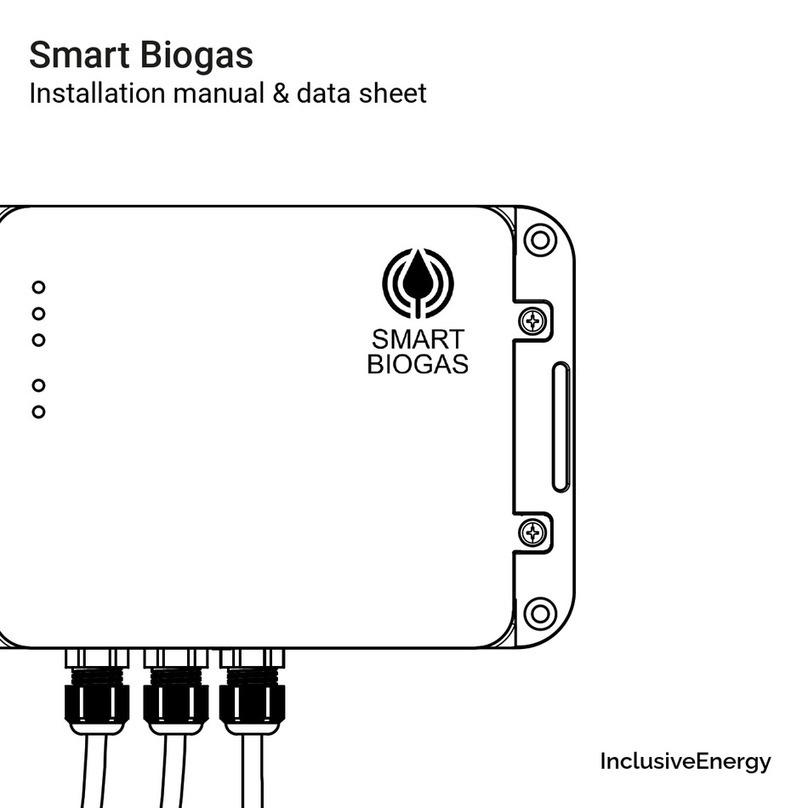
InclusiveEnergy
InclusiveEnergy Smart Biogas installation manual
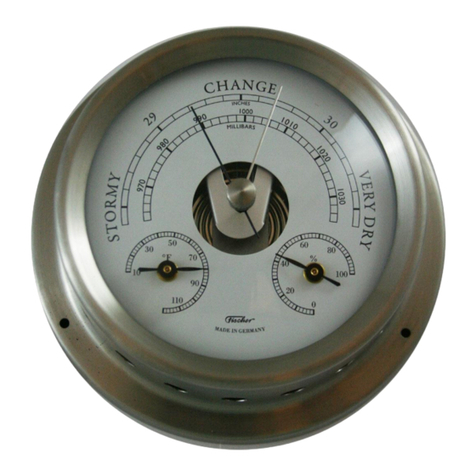
Ambient Weather
Ambient Weather FISCHER 1508BTH-01 user manual
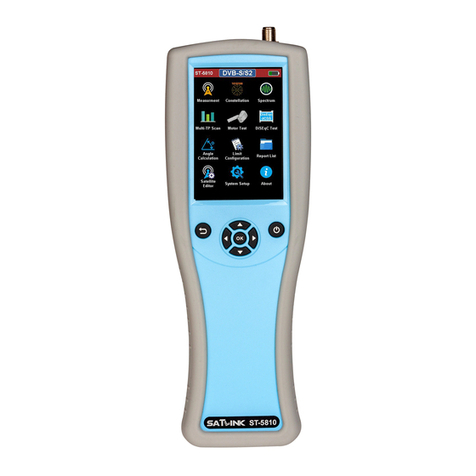
Satlink
Satlink ST-5810 Operation manual
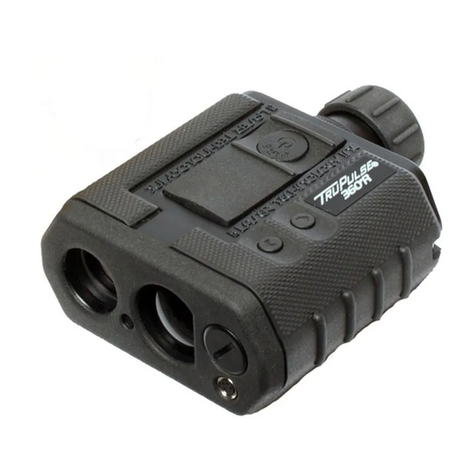
Laser Technology
Laser Technology TruPulse 360R user manual
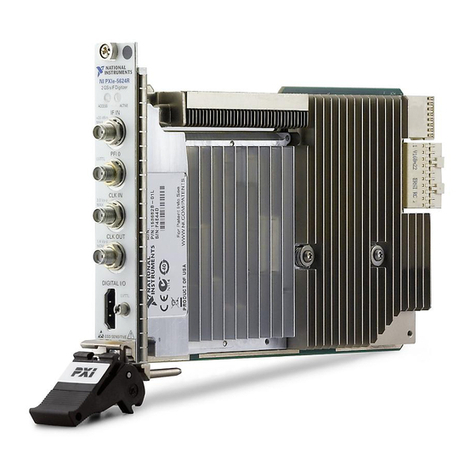
National Instruments
National Instruments NI PXIe-5624R Getting started guide

Raritan
Raritan PM user guide
